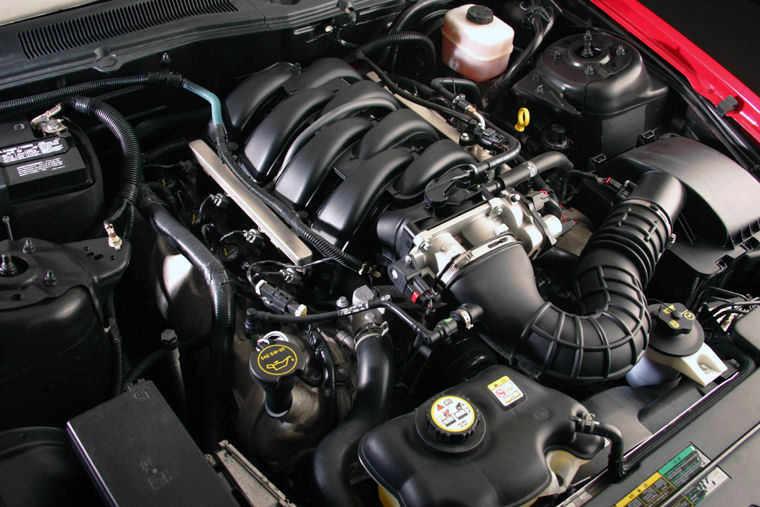2005 Mustang Engine Information – 281 cubic inch V-8 (4.6 L Ford Modular V8)
Ford’s Modular 4.6L SOHC V8
While the modular V-8 still displaced 4.6 liters, the engine block was now cast out of lighter aluminum rather than iron; saving 75-pounds and featured a deep skirt for added strength. Inside the block was a set of short skirt aluminum pistons with an antifriction coating and wrapped with high-tension piston rings for longer life and better oil control. Once again, the cracked-powdered-metal connecting rods were used after proving their durability in past modular motor Mustangs.
Bolted to the top of the aluminum block was a pair of new cylinder heads that were taken from the 5.4-litre Triton truck engine. These aluminum three valve-per-cylinder heads allowed the engine to breath better at high engine speeds since they allowed the incoming air a more direct, port-style path to the two intake valves. The new heads allowed engineers to raise the compression ratio to 9.8:1 while still being able to safely run on regular grade fuel. Operating the valves was the camshaft lifted directly from the 5.4 Triton engine along with another innovation that was a first for any Mustang; Variable Camshaft Timing.
No Subscription? You’re missing out
Get immediate ad-free access to all our premium content.
Get Started



